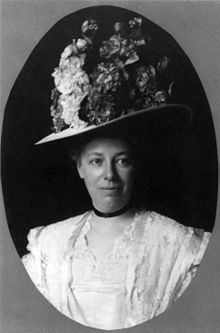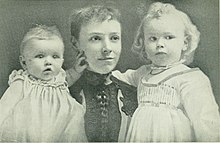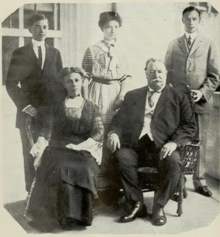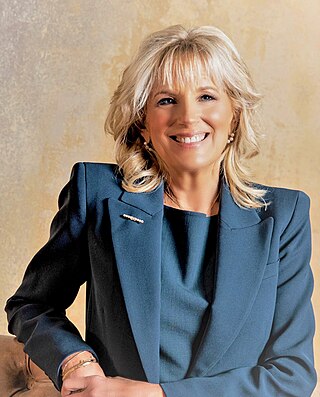
First Lady of the United States (FLOTUS) is the title held by the hostess of the White House, usually the wife of the president of the United States, concurrent with the president's term in office. Although the first lady's role has never been codified or officially defined, she figures prominently in the political and social life of the United States. Since the early 20th century, the first lady has been assisted by official staff, known as the Office of the First Lady and headquartered in the East Wing of the White House.

William Howard Taft was the 27th president of the United States, serving from 1909 to 1913, and the tenth chief justice of the United States, serving from 1921 to 1930, the only person to have held both offices. Taft was elected president in 1908, the chosen successor of Theodore Roosevelt, but was defeated for reelection in 1912 by Woodrow Wilson after Roosevelt split the Republican vote by running as a third-party candidate. In 1921, President Warren G. Harding appointed Taft to be chief justice, a position he held until a month before his death.

Lucy Ware Hayes was the wife of President Rutherford B. Hayes and served as first lady of the United States from 1877 to 1881.
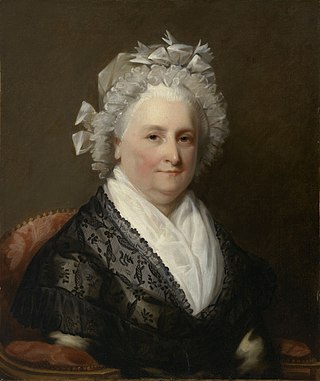
Martha Dandridge Custis Washington was the wife of George Washington, the first president of the United States. Although the title was not coined until after her death, she served as the inaugural first lady of the United States, defining the role of the president's wife and setting many precedents that future first ladies would observe. During her tenure, she was referred to as "Lady Washington". Washington is consistently ranked in the upper half of first ladies by historians.

Eliza Johnson was the first lady of the United States from 1865 to 1869 as the wife of President Andrew Johnson. She also served as the second lady of the United States March 1865 until April 1865 when her husband was vice president. Johnson was relatively inactive as first lady, and she stayed out of public attention for the duration of her husband's presidency. She was the youngest first lady to wed, doing so at the age of 16.

Mary Geneva "Mamie" Eisenhower was the first lady of the United States from 1953 to 1961 as the wife of President Dwight D. Eisenhower. Born in Boone, Iowa, she was raised in a wealthy household in Colorado. She married Eisenhower, then a lieutenant in the United States Army, in 1916. She kept house and served as hostess for military officers as they moved between various postings in the United States, Panama, the Philippines, and France. Their relationship was complicated by his regular absences on duty and by the death of their firstborn son at the age of three. She became a prominent figure during World War II as General Eisenhower's wife.
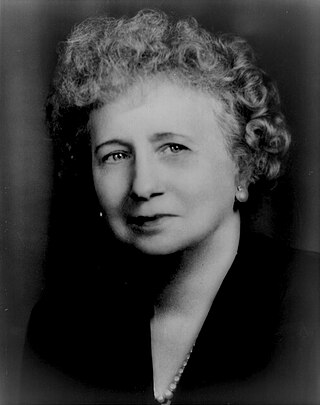
Elizabeth Virginia Truman was the wife of President Harry S. Truman and the First Lady of the United States from 1945 to 1953. She also served as the second lady of the United States from January to April 1945. At 97 years, 247 days, she remains the longest-lived first and second lady.

Edith Wilson was the first lady of the United States from 1915 to 1921 and the second wife of President Woodrow Wilson. She married the widower Wilson in December 1915, during his first term as president. Edith Wilson played an extremely influential role in President Wilson's administration following the severe stroke he suffered in October 1919. For the remainder of her husband's presidency, she managed the office of the president, a role she later described as a "stewardship", and determined which communications and matters of state were important enough to bring to the attention of the bedridden president.

Edith Kermit Roosevelt was the wife of President Theodore Roosevelt and the first lady of the United States from 1901 to 1909. She was previously the second lady of the United States in 1901 and the first lady of New York from 1899 to 1900.
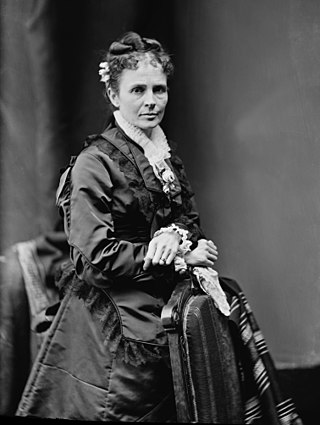
Lucretia Garfield was the first lady of the United States from March to September 1881, as the wife of James A. Garfield, the 20th president of the United States.

Anna Tuthill Harrison was the first lady of the United States in 1841 as the wife of President William Henry Harrison. She served in the role for only one month, as her husband contracted pneumonia and died shortly after his term began. Their son John Scott Harrison was the father of President Benjamin Harrison. She never entered the White House during her tenure as first lady, remaining the only presidential wife to never visit the capital during her husband's presidency. At age 65 when her husband's presidential term began, Harrison was the oldest woman ever to assume the role of first lady, a record held until Jill Biden became first lady at age 69 in 2021. She also has the distinction of holding the title for the shortest length of time, and the first first lady to be widowed while holding the title. Harrison was the last first lady to have been born before the inauguration of George Washington.

Letitia Tyler was the first lady of the United States from 1841 to 1842 as the first wife of President John Tyler. After meeting in 1808, the two married in 1813. She managed their plantation in Virginia while her husband progressed his political career at the state capital and in Washington, D.C., accompanying him only while he was governor of Virginia. She had a stroke in 1839 that left her permanently disabled.
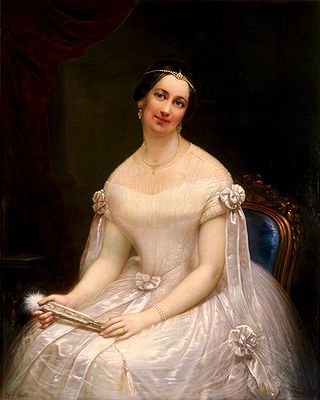
Julia Tyler was the first lady of the United States from June 26, 1844, to March 4, 1845, as the second wife of President John Tyler. A member of the influential Gardiner family, she became a prominent socialite early in life who received many notable figures as suitors. She met the recently widowed President Tyler in 1842, and she agreed to marry him after he comforted her in the aftermath of her father's death. They married in secret, and she became first lady immediately upon their marriage, serving in the role for the final eight months of his presidency.

Jane Means Pierce was the wife of Franklin Pierce and the first lady of the United States from 1853 to 1857. She married Franklin Pierce, then a congressman, in 1834 despite her family's misgivings. She refused to live in Washington, D.C., and in 1842, she convinced her husband to retire from politics. He sought the Democratic presidential nomination without her knowledge in 1852 and was elected president later that year. Their only surviving son, Benjamin, was killed in a train accident prior to Franklin's inauguration, sending Jane into a deep depression that would afflict her for the rest of her life. Pierce was reclusive in her role as first lady, spending the first two years of her husband's presidency in a period of mourning for her son. Her duties at this time were often fulfilled by Abby Kent-Means. After the conclusion of Franklin's presidency they traveled abroad for two years before settling in Massachusetts. She died of tuberculosis in 1863.

Abigail Fillmore, wife of President Millard Fillmore, was the first lady of the United States from 1850 to 1853. She began work as a schoolteacher at the age of 16, where she took on Millard Fillmore, who was two years her junior, as a student. She continued her teaching work after their marriage in 1826 until the birth of her son Millard Powers Fillmore in 1828. She lived in Buffalo, New York, while her husband advanced his political career in Albany, New York, and Washington, D.C. She would occasionally join him in these cities, becoming involved in local social life. She became the second lady of the United States in 1849 after her husband was elected vice president on the Whig Party presidential ticket, and she became the first lady of the United States in 1850 after her husband succeeded to the presidency.

Alice Lee Roosevelt Longworth was an American writer and socialite. She was the eldest child of U.S. president Theodore Roosevelt and his only child with his first wife, Alice Hathaway Lee Roosevelt. Longworth led an unconventional and controversial life. Her marriage to Representative Nicholas Longworth III, a Republican Party leader and 38th Speaker of the U.S. House of Representatives, was shaky, and her only child, Paulina, was from her affair with Senator William Borah.

The inauguration of William Howard Taft as the 27th president of the United States was held on Thursday, March 4, 1909, at the Senate chamber inside the United States Capitol, Washington, D.C., instead of the regular East Portico due to a blizzard. This was the 31st inauguration and marked the commencement of William Howard Taft's only term as president and James S. Sherman's only term as vice president.

Isabella Louisa Hagner James was the first White House social secretary. She served in the administrations of President Theodore Roosevelt, William Howard Taft, and Woodrow Wilson.

Recollections of Full Years is a 1914 memoir by Helen Taft, a First Lady of the United States and wife of William Howard Taft. The memoirs were the first to be published by a first lady. The book serves as "the most important source of information" about Helen Taft.
